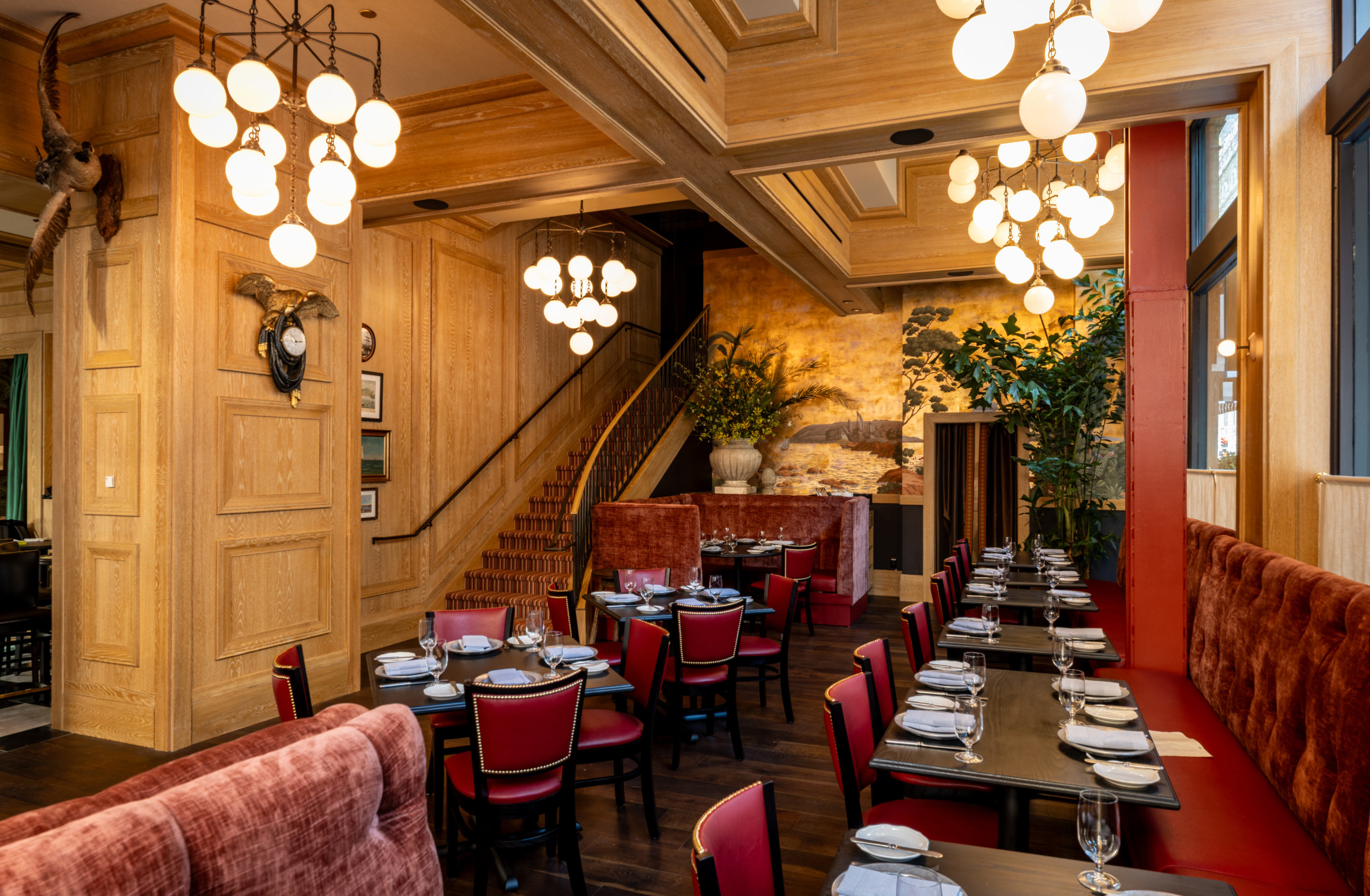
If you've called a restaurant in New York City, Miami, Atlanta, or San Francisco recently, there's a good chance you've spoken with an AI voice host without even realizing it. (Hostie AI) These digital assistants are becoming the new front-of-house staff, handling everything from basic questions about dress codes to reservation requests with remarkable sophistication.
The restaurant industry is experiencing what experts call "unbelievable, crazy growth" in AI phone answering services. (Hostie AI) For independent restaurant owners, this technology represents a game-changing opportunity to reduce labor costs, eliminate missed calls, and improve customer service—but only if you choose the right platform.
In this comprehensive buyer's guide, we'll compare three leading AI phone answering services: Hostie AI, Slang.ai, and Maple. We'll examine 15 critical criteria including first-ring answer rates, pricing, bilingual support, POS integrations, and real-world performance metrics to help you make an informed decision for your restaurant.
Restaurants typically receive between 800 and 1,000 calls per month, with many establishments seeing phones "ring constantly throughout service" for basic questions that can be found on their website. (Hostie AI) This constant interruption pulls staff away from in-person guests and creates operational inefficiencies that directly impact the dining experience.
The traditional solution—hiring human phone staff at $17 per hour—has proven unsustainable for most independent restaurants. (Hostie AI) As one industry expert noted, "Humans typically don't stay long in these positions," creating a cycle of constant hiring and training.
AI voice assistants offer a compelling alternative, providing 24/7 availability and consistent service quality. (Slang AI) According to industry data, only 10 percent of calls handled by AI systems require transfer to a human staff member, demonstrating the technology's effectiveness at resolving customer inquiries independently. (Wired)
| Feature | Hostie AI | Slang.ai | Maple |
|---|---|---|---|
| Target Market | Independent restaurants | Sit-down restaurants & hospitality | High-volume QSRs & chains |
| Setup Time | Industry-optimized | 30 minutes | Quick deployment |
| Primary Focus | Comprehensive restaurant operations | Reservations & basic inquiries | Call automation & conversion |
| Integration Strength | Existing reservation & POS systems | Hospitality-focused | QSR-optimized |
| Funding Status | Growing startup | $20M Series A (2024) | Established player |
| Best For | Restaurants seeking operational efficiency | Reservation-heavy establishments | High-call-volume operations |
Company Background
Hostie AI positions itself as "designed for restaurants, made by restaurants," emphasizing deep industry understanding and purpose-built functionality. (Hostie AI) The platform integrates directly with existing reservation systems, POS systems, and event planning software that restaurants already use. (Hostie AI)
Key Strengths:
Target Customer:
Independent restaurants and small chains looking for a comprehensive solution that understands restaurant-specific needs and integrates with existing systems.
Company Background
Slang.ai emerged during the COVID-19 pandemic with a focus exclusively on restaurants and hospitality businesses. (TechCrunch) Founded by former Spotify data scientists Alex Sambvani and Gabriel Duncan, the company secured $20 million in funding in 2024. (Slang AI)
Key Strengths:
Target Customer:
Sit-down restaurants and hospitality groups that prioritize reservation management and basic call handling over comprehensive operational integration.
Company Background
Maple focuses on full call automation for high-volume restaurant operations, with a product philosophy centered on maximizing call conversion and labor ROI. (Maple) The platform is specifically designed for QSRs and fast-casual chains that handle large call volumes.
Key Strengths:
Target Customer:
QSRs, fast-casual chains, and high-volume restaurants where call conversion and operational efficiency are primary concerns.
Winner: Tie (All platforms)
All three platforms offer immediate call answering capabilities, eliminating the missed calls that plague traditional phone systems. AI systems don't take breaks, handle multiple calls simultaneously, and maintain consistent availability. (Slang AI)
Winner: Varies by restaurant size
The lack of transparent pricing from some platforms reflects the industry's move toward customized solutions based on call volume and feature requirements.
Winner: Platform-dependent
With the restaurant industry's diverse customer base, bilingual capabilities are increasingly important. All platforms offer some level of multilingual support, though implementation varies. The effectiveness depends on the quality of language models and cultural context understanding.
Winner: Hostie AI
Hostie AI's restaurant-native approach provides the deepest integration with existing POS systems and reservation platforms. (Hostie AI) This integration allows for real-time menu updates, inventory awareness, and seamless order processing without manual intervention.
Winner: Context-dependent
Winner: Slang.ai
Slang.ai's 30-minute setup time represents the fastest deployment among the three platforms. (Slang AI) However, faster setup may come at the cost of customization depth.
Winner: Hostie AI
Restaurants with complex menus, seasonal changes, and special dietary accommodations need AI that can handle nuanced conversations. Hostie AI's restaurant-specific design provides better context understanding for menu-related inquiries.
Winner: Slang.ai
Slang.ai's core focus on reservation handling gives it an edge for restaurants where bookings are the primary phone interaction. (Slang AI) The platform is specifically optimized for taking and modifying reservations.
Winner: Maple
Maple's focus on call conversion and high-volume operations suggests superior order-taking capabilities for restaurants where phone orders are a significant revenue source. (Maple)
Winner: Hostie AI
With its hospitality-focused approach and restaurant industry expertise, Hostie AI is positioned to provide the most natural, service-oriented customer interactions. (Hostie AI)
Winner: Platform-dependent
All platforms provide call analytics, but the depth and restaurant-specific insights vary. Look for platforms that offer metrics on call resolution rates, customer satisfaction, and operational impact.
Winner: Maple
Maple's design for high-volume operations and chain restaurants suggests superior scalability for growing restaurant groups. (Maple)
Winner: Hostie AI
Hostie AI's integration with existing restaurant systems and industry-specific design likely offers the most customization options for unique operational needs. (Hostie AI)
Winner: Slang.ai
With $20 million in recent funding, Slang.ai has the resources to provide comprehensive technical support and continued platform development. (Slang AI)
Winner: Tie
All three platforms are actively developing AI capabilities, but their different focuses suggest varying future directions. Consider which platform's roadmap aligns best with your restaurant's growth plans.
Despite AI capabilities, the restaurant industry remains fundamentally about human connection and hospitality. The best AI phone systems enhance rather than replace the human touch. (Hostie AI) Successful implementations maintain the warmth and personality that customers expect from restaurant interactions.
Restaurants often struggle with technology adoption due to complex existing systems and staff training requirements. (AppFront) The most successful AI phone implementations are those that work seamlessly with current workflows rather than requiring operational overhauls.
The restaurant industry's tight margins make ROI calculation critical. (HospitalityNet) Consider not just the direct cost savings from reduced labor, but also the revenue impact from improved customer service, reduced missed calls, and operational efficiency gains.
The restaurant industry's embrace of AI technology has accelerated significantly since 2022, with AI becoming "a significant part of every business industry, including restaurants." (Incentivio) This trend is expected to continue as platforms mature and demonstrate clear ROI.
While current restaurant AI operates primarily on rule-based systems, the industry is moving toward machine learning algorithms that can provide truly personalized experiences. (HospitalityNet) This evolution will enable AI systems to remember customer preferences and provide increasingly sophisticated service.
The global food service market, valued at $2.52 trillion in 2021, is projected to reach $4.43 trillion by 2028. (HospitalityNet) This growth, combined with labor challenges, creates a substantial opportunity for AI phone answering services.
Analyze your current phone traffic to understand peak times, call types, and resolution requirements. High-volume operations may benefit from Maple's conversion focus, while reservation-heavy restaurants might prefer Slang.ai's specialized approach.
Consider your existing technology stack and integration needs. If you have complex POS and reservation systems, Hostie AI's restaurant-native approach may provide the smoothest implementation. (Hostie AI)
Look beyond monthly subscription fees to consider setup costs, training time, and ongoing maintenance requirements. Factor in the cost of missed opportunities from poor integration or inadequate functionality.
Choose a platform that can scale with your restaurant's growth plans. Consider whether you might expand locations, add services, or change operational models in the coming years.
Most platforms offer trial periods or demonstrations. Use these opportunities to test real-world scenarios and evaluate how well each system handles your specific needs.
When evaluating AI phone answering services, consider these key ROI factors:
Cost Savings:
Revenue Enhancement:
Operational Benefits:
The choice between Hostie AI, Slang.ai, and Maple ultimately depends on your restaurant's specific needs, operational complexity, and growth plans. Each platform offers distinct advantages:
Choose Hostie AI if you're an independent restaurant seeking comprehensive operational integration with existing systems and want a solution built specifically for restaurant workflows. (Hostie AI)
Choose Slang.ai if you're a sit-down restaurant or hospitality group that prioritizes reservation management and wants rapid deployment with strong financial backing for continued development. (Slang AI)
Choose Maple if you're a high-volume QSR or chain restaurant focused on maximizing call conversion and operational efficiency at scale. (Maple)
The AI phone answering revolution is transforming how restaurants handle customer communications. (Hostie AI) By carefully evaluating your needs against each platform's strengths, you can select a solution that not only reduces costs but enhances the customer experience that defines great hospitality.
Remember, the best AI phone system is one that feels invisible to your customers while providing powerful operational benefits to your team. Take advantage of trial periods, speak with current users, and choose the platform that aligns with your restaurant's unique personality and operational needs.
Each platform serves different restaurant needs: Hostie AI focuses on comprehensive phone automation for independent restaurants, Slang.ai specializes as an AI receptionist optimized for reservations and basic call handling for sit-down restaurants, while Maple targets high-volume QSRs and fast-casual chains with full call automation designed to maximize conversion rates and labor ROI.
Pricing varies significantly based on call volume and features. Most AI phone answering services for restaurants use tiered pricing models starting around $100-300 per month for basic plans, with enterprise solutions reaching $500+ monthly. The cost is typically offset by reduced labor expenses and increased order capture from previously missed calls.
Modern AI voice assistants have become remarkably sophisticated, and many customers don't realize they're speaking with AI. As noted in recent reports, if you've called restaurants in major cities like New York, Miami, or San Francisco, there's a good chance you've already interacted with an AI host without knowing it. The technology has advanced to provide natural, conversational experiences.
For independent restaurants new to AI automation, the choice depends on your primary needs. Slang.ai offers quick 30-minute setup and focuses on reservation handling, making it ideal for sit-down establishments. Hostie AI provides comprehensive phone automation suitable for various independent restaurant types, while Maple is better suited for high-volume operations seeking maximum call conversion.
Integration capabilities vary by provider and are crucial for seamless operations. Most leading AI phone services offer integrations with popular restaurant POS systems, reservation platforms, and ordering systems. However, the depth and ease of integration differ significantly between providers, making this a key evaluation criterion when choosing a solution.
Restaurants typically see ROI through reduced labor costs, eliminated missed calls, and increased order capture. Studies show that restaurants can miss 20-30% of incoming calls during peak hours, representing significant lost revenue. AI phone services can capture these calls 24/7, while also freeing staff to focus on in-person guests, often paying for themselves within 2-3 months of implementation.
RELATED


